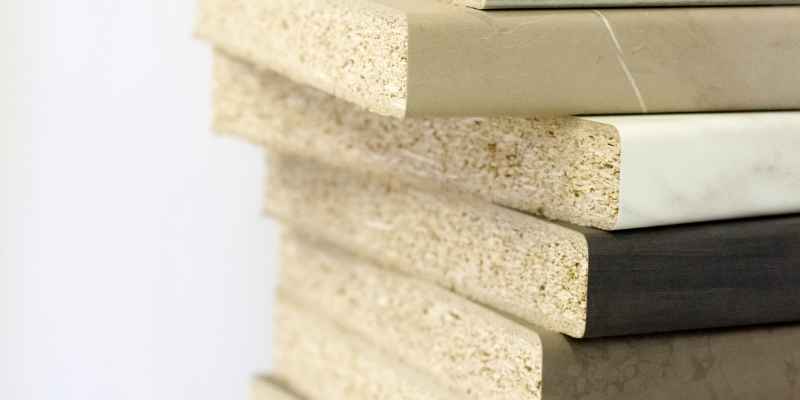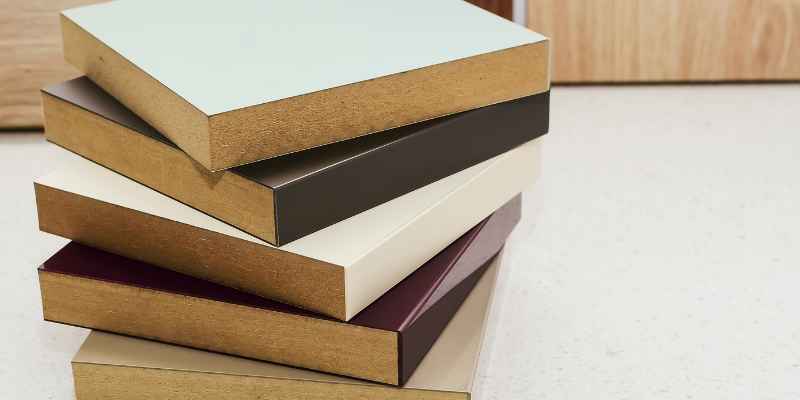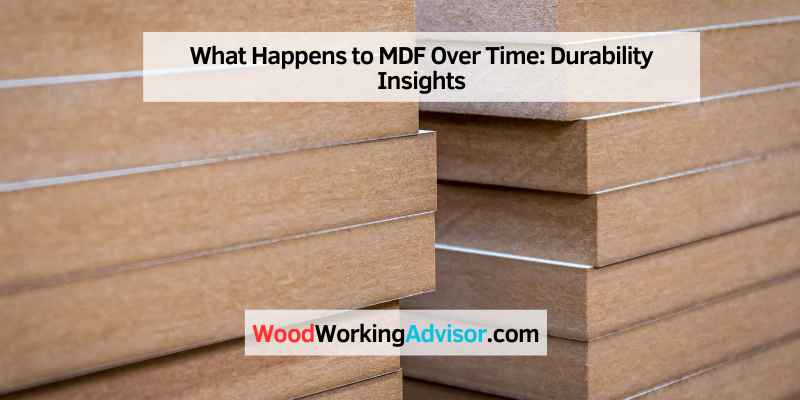MDF can swell, warp, or deteriorate over time, especially when exposed to moisture. It may also lose structural integrity.
Medium-density fiberboard (MDF) is a popular material in furniture and construction. It offers affordability and versatility. Over time, MDF faces challenges that can impact its durability and appearance. Moisture exposure is a significant concern, leading to swelling, warping, and deterioration.
Additionally, fluctuations in temperature and humidity can compromise its structural integrity. Proper sealing and maintenance are crucial to prolonging the lifespan of MDF. Homeowners and builders should consider these factors when choosing MDF for various projects. Understanding its long-term behavior helps in making informed decisions for sustainable and lasting results.
The Lifespan Of Mdf
MDF can last for many years. Its lifespan depends on usage and conditions. For indoor furniture, it holds up well. Proper care can extend its life. Exposure to moisture reduces its durability. Regular cleaning helps maintain its quality. Well-made MDF products can last over a decade.
Several factors affect MDF’s longevity. Moisture exposure is a major concern. High humidity can cause swelling. Temperature changes also impact its durability. Quality of the MDF matters too. Better quality means a longer lifespan. Proper installation plays a key role. Using the right tools is essential. Lastly, regular maintenance ensures longer use.

Environmental Effects On Mdf
Moisture and humidity can cause MDF to swell. This makes the board lose its shape. If the MDF gets too wet, it might even break apart. Keeping MDF dry is very important. This helps it last longer and stay strong.
Temperature changes can also affect MDF. Hot and cold temperatures can make MDF expand and contract. Over time, this can weaken the board. Cracks might form, and the MDF could become brittle. Keeping MDF in a stable environment helps maintain its quality.
Physical Changes Over Time
MDF can warp, swell, or crack over time due to changes in humidity and temperature. Proper sealing and maintenance help mitigate these effects.
Swelling And Warping
MDF can swell and warp when exposed to moisture. This is because MDF is made of small wood fibers. These fibers absorb water easily. Swelling can cause the MDF to lose its shape. Warping might make the surface uneven. This can affect the appearance of the MDF product. Keeping MDF dry helps prevent these issues.
Discoloration
Exposure to sunlight can cause MDF to discolor over time. The color may fade or turn yellow. This is common with many wood products. To protect MDF, keep it away from direct sunlight. Using protective coatings can also help. Discoloration does not affect the strength of MDF. It only changes its appearance.
Chemical Breakdown
Glue in MDF can break down over time. Heat and moisture speed up this process. Old MDF becomes weak and can fall apart. Degraded glue can no longer hold the fibers together. This weakens the board and makes it less useful. High humidity is a big problem for MDF. Always keep MDF in a dry place.
MDF releases formaldehyde gas. This happens more as the board ages. Old MDF can be a health risk. Breathing formaldehyde can cause health problems. Well-ventilated areas help reduce this risk. Sealing MDF can also help keep gases in. Newer MDF boards have less formaldehyde. Choose low-emission MDF for a safer home.
Wear And Tear
MDF is prone to surface scratches. These can occur from daily use. Even small objects can scratch the surface. Dents are also common. Heavy items can cause them. Dropping objects can result in dents too. Scratches and dents affect the look of MDF.
Edges of MDF can fray over time. This happens due to wear. Fraying makes the edges look rough. Chipping is another issue. Edges can chip easily. This occurs with impact. Chipped edges expose the inner material. Both fraying and chipping reduce the quality of MDF.
Maintenance And Upkeep
Regular cleaning helps keep MDF in good shape. Use a soft cloth to wipe dust. Avoid using too much water. Water can make MDF swell. A damp cloth is enough. For sticky spots, use a mild cleaner. Always dry the surface after cleaning. This helps keep the MDF from swelling.
Protect MDF from direct sunlight. Sunlight can make the color fade. Use curtains or blinds to block the sun. Keep MDF away from water. Water can damage it. Use coasters under drinks. This helps prevent water rings. Use placemats under hot dishes. Heat can damage the surface. Always handle MDF with care. This keeps it looking new for longer.
Replacement And Disposal
MDF can swell when exposed to water. Cracks or splits may appear over time. Edges can become frayed and rough. Surface peeling is another sign of damage. Warping can make MDF unusable. Mold and mildew growth can also occur. When MDF loses its strength, it’s time to replace it.
Recycling is an option for MDF disposal. Local waste management facilities may accept MDF. Donation is another way to dispose of MDF. Repurposing MDF can also be eco-friendly. Avoid burning MDF as it releases harmful chemicals. Consult local guidelines for proper disposal.

Frequently Asked Questions
What Happens To Mdf At The End Of Its Life?
MDF can be recycled or repurposed at the end of its life. Disposal in landfills is also an option.
How Many Years Does Mdf Last?
MDF can last 10-15 years with proper care. It depends on usage, environment, and maintenance practices.
Does Mdf Deteriorate?
Yes, MDF can deteriorate over time. Moisture exposure, poor maintenance, and heavy usage speed up its deterioration. Seal and protect MDF to extend its lifespan.
Conclusion
MDF can deteriorate over time, especially in humid conditions. Regular maintenance and proper sealing can extend its lifespan. By understanding MDF’s characteristics, you can make informed decisions for your projects. Investing in quality MDF and taking care of it ensures durability and longevity.
Choose wisely to enjoy lasting results.


